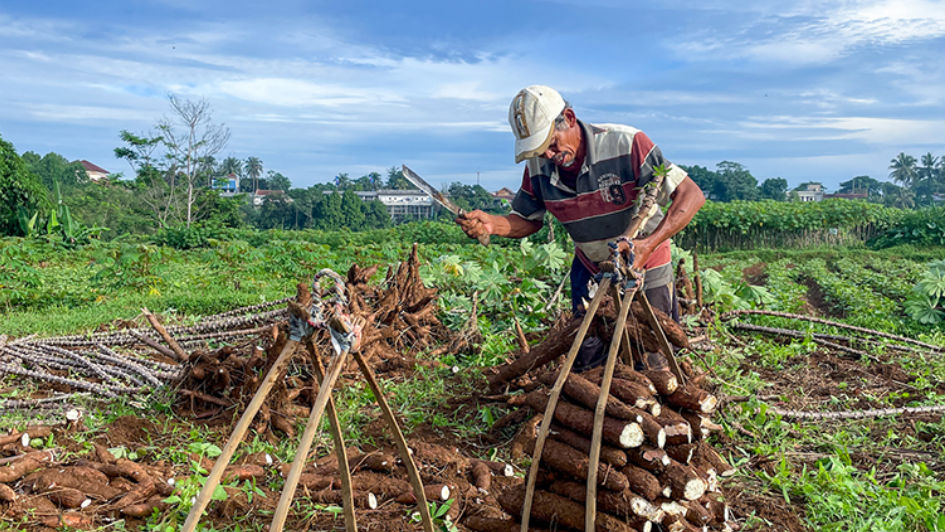Biodegradable Plastic Prevents Microplastics
Wednesday, 21 June 2023
Single-use plastics are usually discarded and accumulate on land and oceans. This of course causes a lot of plastic waste problems where. According to data from the EPA, there are 8.6 billion tons of plastic that we have produced until now. Meanwhile, only 91.3% of the plastic has successfully passed the recycle process. Thus, we need a new solution to overcome the problem of plastic waste, namely biodegradable plastic.
This environmentally friendly plastic is the result of expert development. The main goal is to make plastic that has the same quality as regular plastic but can decompose faster in the environment. This means that they have less negative impact on the earth, which in turn means lower levels of plastic pollution. While conventional plastics take hundreds of years to decompose, Greenhope's biodegradable plastics can decompose in just 6 months-5 years. If we analogize it, it is almost like the speed of a snail compared to the speed of a super jet airplane.
In short, biodegradable plastics are plastics that break down faster through oxidation. Moreover, these plastics have also been tested for safety. In a sense, biodegradable will not cause health problems for humans. This is because oxium prevents microplastics which will only add to the pollution problem.
So, what is biodegradable? Check out this article for more information!
WHAT EXACTLY IS BIODEGRADABLE PLASTIC?
Biodegradable plastics are made from a petroleum-derived base and a limited amount of metal salts. The presence of metals in the plastic makes its molecular structure breakable when exposed to heat and oxygen.
The plastic will eventually degrade to a point where it can be broken down by microbes. This reduces the time required for decomposition to occur. Regular plastic will only break down into carbon dioxide, water, and biomass after a long, drawn-out process. However, biodegradable plastics can cut down this long process.
The deterioration process will become even faster in the presence of microorganisms. Biodegradable has clear advantages over other solutions for the decomposition of plastic waste. Of course, the amount of time to break down will depend on factors that aid the process, such as sunlight, heat, and microbes.
Biodegradable plastics begin to break down when exposed to sunlight or ultraviolet light. If this type of plastic is handled properly, it can potentially last for years. However, if this type of plastic is wasted, biodegradable plastic can decompose in nature within 6 months to 5 years.
Moreover, if there is access to oxygen in the landfill, the degradation process of biodegradable plastics will occur faster.
BIODEGRADABLE VS DEGRADABLE
People sometimes still equate biodegradable plastics with "degradable" plastics because they do not require biological processes to break down. But the two are completely different.
Degradable plastic is in a different category to oxium because of the unique way it works. So, this type of plastic does not fall under the biodegradable category as it is a combination of conventional plastic with additives that aim to mimic the biodegradation process.
Moreover, degradable plastics will break themselves down into very small fragments. We know them as microplastics. This process, of course, will not break down the plastic polymer to the molecular level. Thus, degradable plastics will continue to pollute the environment until it finally decomposes itself after thousands of years.
OXIUM PREVENTS MICROPLASTICS
Biodegradation means the process of natural decomposition. This process usually uses microorganisms and bacteria to decompose matter and avoid pollution. However, biodegradation cannot happen quickly. According to WWF, plastic bags take 20 years to decompose, plastic straws take 200 years, while plastic bottles 450 years.
Fortunately, biodegradable plastics can speed up the biodegradation process. In a sense, the process remains the same but the time becomes very fast. Moreover, biodegradable plastics will not leave behind residues such as toxins or microplastics.
The advantage of oxium is the use of minerals that can accelerate the natural oxidation process. Instead of producing microplastics, oxium breaks down plastic polymers into low molecular weight oligomers that can be quickly digested by microbes. In either case, oligomers are not the same as microplastics.
Their further degradation will depend on the micro-organisms and bacteria in the disposal environment. Products that already use oxium are usually designed to decompose in landfills. However, when discharged into nature, this type of plastic can decompose in just 2 - 5 years.
"Oxium is designed to degrade faster. When exposed to oxygen, heat, or ultraviolet light, biodegradable plastics undergo a faster degradation process. This can help reduce the time it takes for plastics to decompose in nature, reducing the potential for long-term accumulation of plastic waste." Arsika Ahmad (Head of Sales & Marketing Greenhope)
Oxium biodegradable plastics function as a blend of additives added into conventional plastics such as Polyethylene (PE), Polypropylene (PP), Polystyrene (PS), Polyethylene Terephthalate (PET) and sometimes also Polyvinyl Chloride (PVC) at the time of conversion into the final product.
BIODEGRADABLE BENEFITS
Here are some of the advantages of using biodegradable plastics:
Has the same properties and strength as conventional plastics throughout the life of the product.
- Has a long usability time span, can last for years indoors.
- Can be reused and recycled.
- Biodegradable in landfill, and the process does not produce methane.
- Help save petroleum supplies.
Therefore, biodegradable plastics are considered as environmentally friendly plastics.



